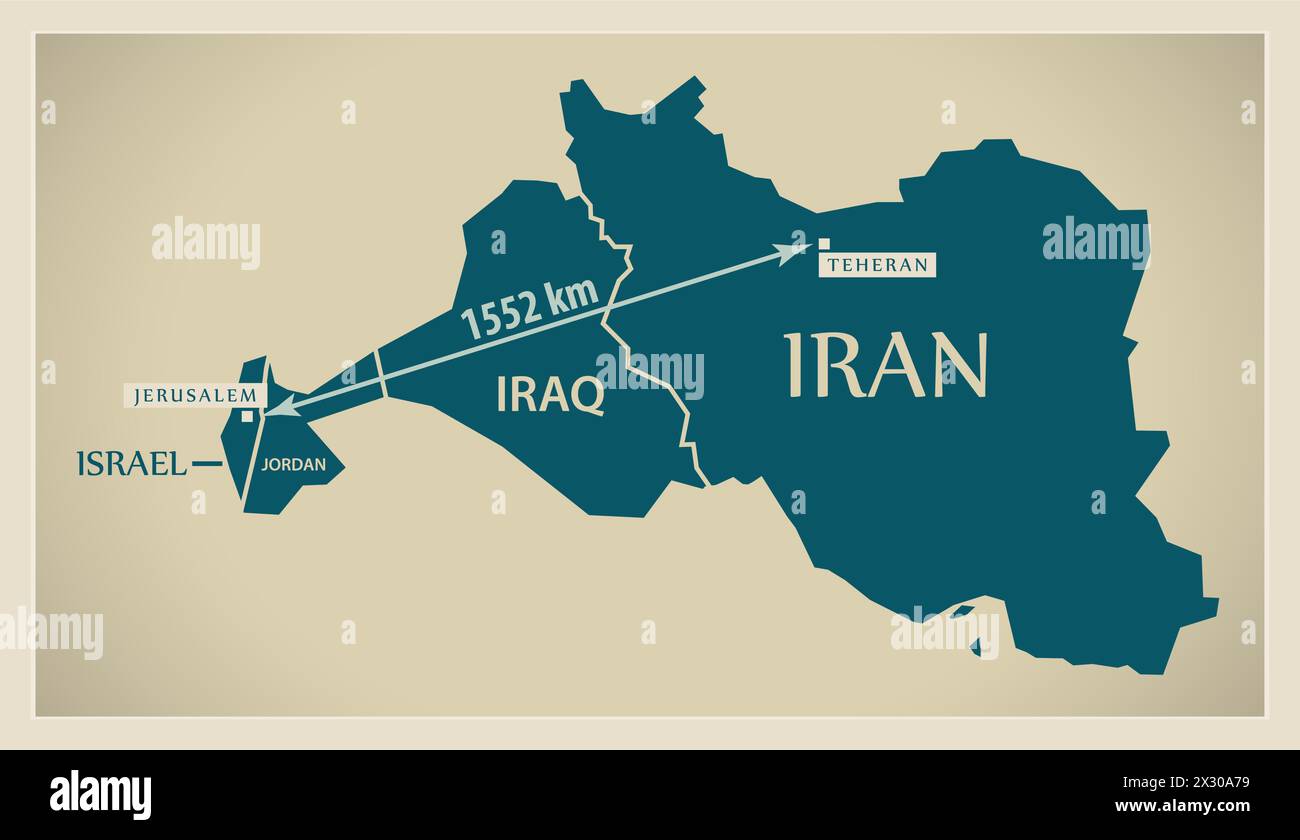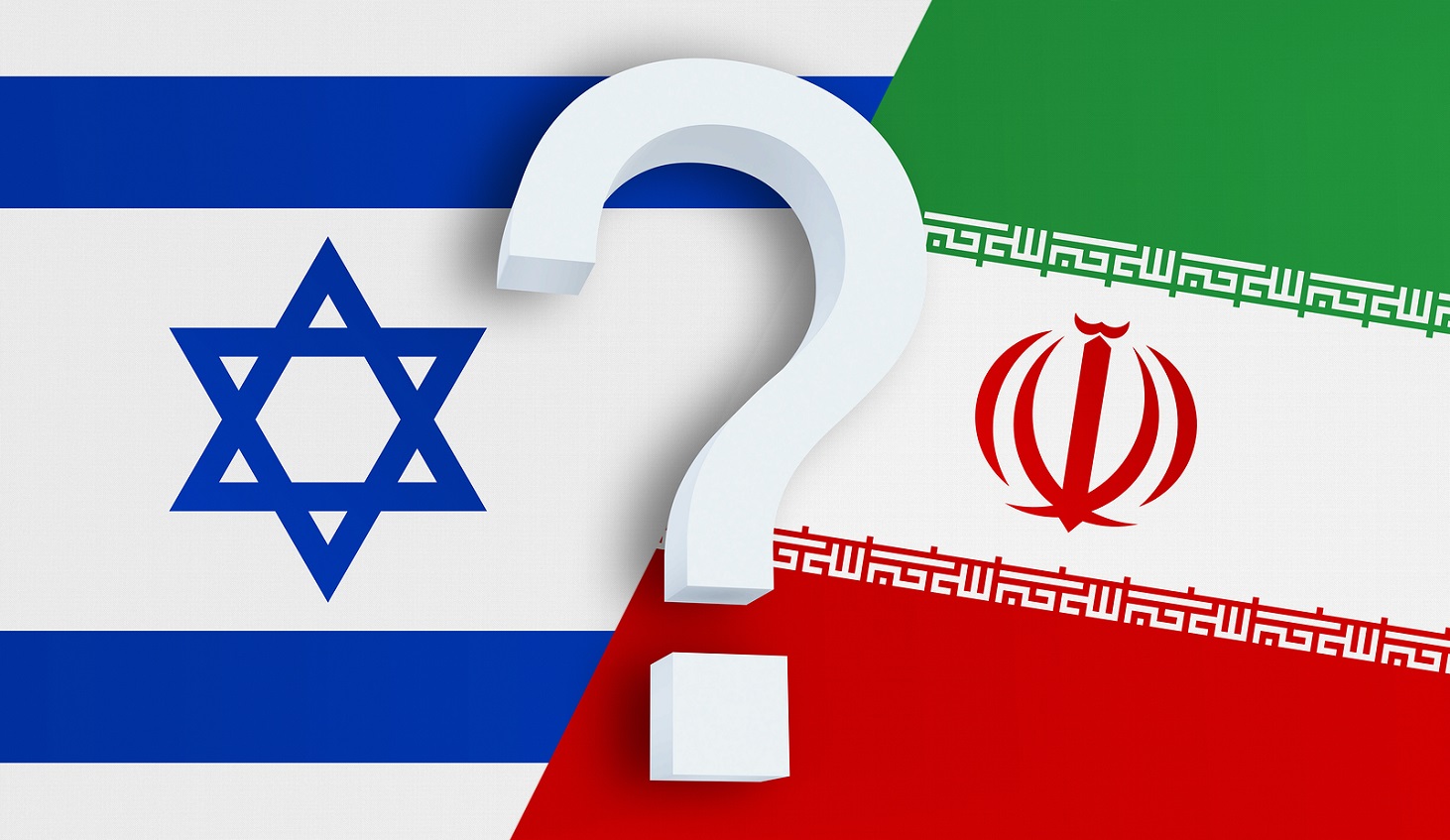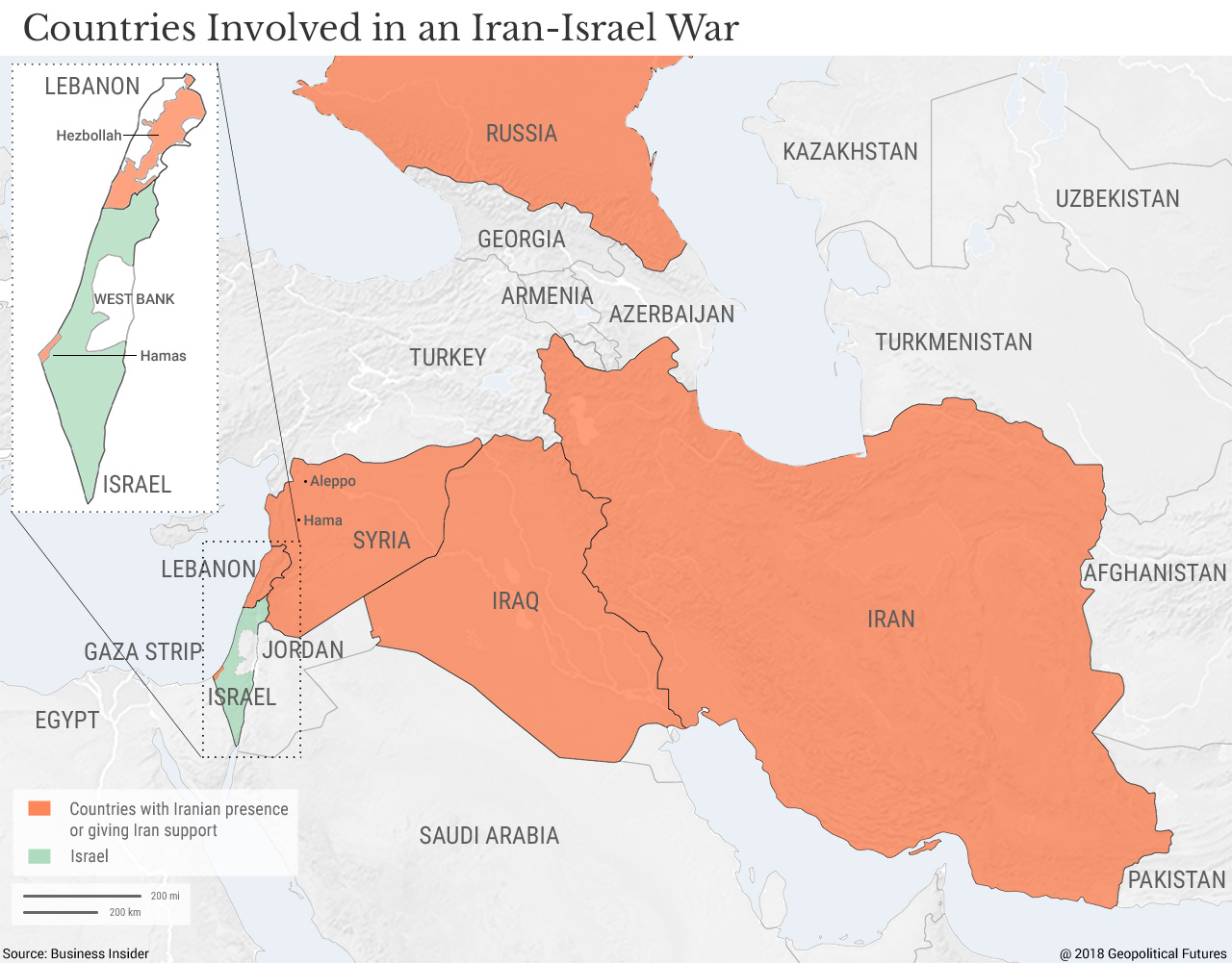Unveiling The Kilometers: The True Distance Between Iran And Israel
The geopolitical landscape of the Middle East is undeniably complex, marked by historical narratives, cultural nuances, and strategic rivalries. At the heart of many discussions surrounding regional stability lies the often-asked question: what is the actual "distance between Iran and Israel distance kilometers"? While a seemingly straightforward query, the answer is far more intricate than a simple number on a map, encompassing geographical realities, political barriers, and the pervasive influence of modern technology. This article delves into the precise measurements, explores the broader implications of their geographical separation, and examines how this physical distance interacts with the profound geopolitical chasm that defines their relationship.
Understanding the literal kilometric distance is just the starting point. Beyond the direct line on a globe, factors such as intervening territories, airspace restrictions, and the capabilities of military technology significantly alter the practical implications of their proximity. We will explore how tools like distance calculators provide the raw data, but also how the "effective" distance is shaped by the complex web of international relations and strategic considerations.
Table of Contents
- Understanding Geographical Distance: The Basics
- Calculating the "Distance Between Iran and Israel Distance Kilometers"
- Geopolitical Landscape and Proximity
- The Concept of "Effective Distance" Beyond Kilometers
- Historical Context of Regional Dynamics
- Technological Advancements and Shrinking Distances
- Economic and Cultural Exchange (or Lack Thereof)
- The Human Element: Understanding the Impact
Understanding Geographical Distance: The Basics
When we talk about the "distance between Iran and Israel distance kilometers," it's crucial to first define what kind of distance we are referring to. Is it the straight-line distance, often called "as the crow flies," or is it the ground distance, which would account for roads, terrain, and political borders? For countries that do not share a direct border, the straight-line distance is typically the most relevant measure for understanding their fundamental geographical proximity, especially in strategic contexts like missile range or aerial transit.
- Jd Vance Meme
- Discovering The Legacy Of Desi Arnaz Jr
- Sophie Raiin Spider Man
- Mrs Mandy Lueilwitz Phd
- Frank Ocean Boyfriend
Calculating such distances has become incredibly accessible thanks to modern technology. Online tools and geographical information systems (GIS) can pinpoint locations with remarkable accuracy. As the "Data Kalimat" provided suggests, services like distance.to are designed precisely for this purpose: "Con il calcolatore di distanza distance.to puoi facilmente determinare la distanza chilometriche tra luoghi in tutto il mondo. Basta inserire i nome di due località nel campo di ricerca per ottenere." This ease of access allows anyone to quickly ascertain the shortest distance between virtually any two points on the globe.
Air Line vs. Ground Route: What's the Difference?
The "air line" distance, also known as the great-circle distance, is the shortest path between two points on the surface of a sphere (or spheroid, like Earth). This is the most common measurement used in international relations and military planning because it represents the most direct path for aircraft, missiles, or even satellite communication. For instance, "Shows the distance in kilometres between Mecca and Medina and displays the route on an interactive map, Worldwide distance calculator with air line, route planner, travel duration and..." highlights how air line distance is fundamental.
In contrast, a "ground route" or "travel route" calculates the distance one would travel along existing roads, railways, or shipping lanes. This distance is almost always longer than the air line distance due to geographical obstacles, political borders, and the meandering nature of infrastructure. For the "distance between Iran and Israel distance kilometers," a ground route is practically non-existent due to the absence of diplomatic relations and the presence of intervening hostile territories. Therefore, when discussing their proximity, the air line distance is the primary focus.
Calculating the "Distance Between Iran and Israel Distance Kilometers"
To pinpoint the "distance between Iran and Israel distance kilometers," we need to select specific reference points within each country. Given their size, the distance can vary depending on which cities or regions are chosen. However, for a general understanding, we often consider the distance between their respective capitals or major strategic centers.
For example, taking Tehran, Iran's capital, and Jerusalem (or Tel Aviv, Israel's economic hub) as reference points:
- The approximate air line distance from **Tehran, Iran, to Jerusalem, Israel**, is roughly **1,600 to 1,800 kilometers (about 994 to 1,118 miles)**.
- The approximate air line distance from **Tehran, Iran, to Tel Aviv, Israel**, is also in a similar range, around **1,500 to 1,700 kilometers (about 932 to 1,056 miles)**.
These figures are derived from global distance calculators. As the provided data states, "Cu calculatorul de distanță distance.to, poți calcula cu ușurință distanțele dintre locuri din întreaga lume. Trebuie doar să introduci locul dorit în caseta de căutare și vei primi cea mai scurtă." This means by simply entering "Tehran" and "Jerusalem" into a reliable distance calculator, you would obtain these figures, representing the shortest possible path through the air. The famous distance calculator, as noted, "Le célèbre calculateur de distance permet de déterminer la distance en kilomètres qui sépare deux lieux et coordonnées." This functionality is crucial for quickly grasping the fundamental geographical separation.
It's important to note that these are straight-line distances. The actual flight paths for any aircraft would need to consider air traffic control, geopolitical restrictions, and potential no-fly zones, making direct commercial flights between the two nations impossible.
Geopolitical Landscape and Proximity
While the numerical "distance between Iran and Israel distance kilometers" might seem substantial, the geopolitical context makes it feel much smaller. Iran and Israel do not share a direct border. They are separated by several other nations, primarily Iraq, Syria, and Jordan. This geographical buffer is critical, as it means any direct military confrontation would involve traversing or overflying third countries, complicating logistics and international law.
The lack of a shared border means there are no land crossings, no direct trade routes, and absolutely no diplomatic or cultural exchanges facilitated by physical proximity. This absence of direct contact reinforces the political and ideological divide, making the physical separation feel like an insurmountable barrier. The intervening territories are themselves often unstable or aligned with one side or the other, turning the geographical space into a complex chessboard rather than a simple void.
The Concept of "Effective Distance" Beyond Kilometers
In international relations, the "effective distance" between two states often differs significantly from the raw kilometric figure. For Iran and Israel, the effective distance is influenced by a multitude of factors, including military capabilities, alliances, proxy forces, and technological advancements.
Despite the thousands of kilometers separating them, Iran and Israel are effectively "neighbors" in a strategic sense. Both nations possess advanced military capabilities, including long-range missiles that can easily cover the "distance between Iran and Israel distance kilometers." Iran's ballistic missile arsenal, for instance, includes variants capable of reaching targets across the entire Middle East, including Israel. Similarly, Israel is known to possess sophisticated long-range strike capabilities.
Strategic Implications of Geographical Separation
The geographical separation means that any direct military conflict would likely involve air strikes, missile attacks, or naval operations (though less direct). It reduces the possibility of conventional ground warfare between their primary forces, shifting the focus to aerial and missile defense systems. This also necessitates the use of proxies and indirect means of engagement, such as supporting various non-state actors in neighboring countries.
For instance, Iran's support for groups like Hezbollah in Lebanon or various militias in Syria and Iraq effectively extends its reach closer to Israel's borders, shrinking the "effective distance" through non-state actors. This strategy allows Iran to exert influence and pose a threat without a direct, overt military presence on Israel's immediate borders. Conversely, Israel's actions against these proxies in Syria and Lebanon are often seen as part of its ongoing conflict with Iran, illustrating how the battleground extends far beyond their national boundaries.
Historical Context of Regional Dynamics
The current "distance between Iran and Israel distance kilometers" is not just a static geographical fact; it is imbued with decades of evolving political and ideological conflict. Historically, pre-1979, Iran under the Shah maintained diplomatic relations with Israel, and the geographical distance was merely a physical separation, not a political chasm. The Iranian Revolution of 1979 fundamentally altered this relationship, transforming Iran into an Islamic Republic vehemently opposed to Israel's existence.
This ideological shift created a profound political "distance" that has overshadowed the geographical one. The intervening years have seen a consistent pattern of proxy conflicts, rhetorical exchanges, and strategic maneuvering, all aimed at gaining regional advantage. This historical trajectory means that the kilometric distance is now viewed through a lens of deep-seated animosity and strategic rivalry, making every kilometer feel significant. The "distance between Iran and Israel distance kilometers" is thus not just a measurement, but a symbol of their entrenched opposition.
Technological Advancements and Shrinking Distances
In the modern era, technological advancements have fundamentally altered the perception and strategic implications of geographical distance. For the "distance between Iran and Israel distance kilometers," this is particularly true. What once might have been considered a safe buffer zone has been significantly eroded by the development of long-range weaponry and sophisticated intelligence capabilities.
The Role of Air Power and Missile Technology
Both Iran and Israel have invested heavily in their military capabilities, especially in areas that can project power over significant distances.
- Ballistic Missiles: Iran's missile program has been a major point of international concern. Its Shahab, Ghadr, and Sejjil missile families have ranges that comfortably exceed the "distance between Iran and Israel distance kilometers." This means that despite the physical separation, Iran possesses the means to directly target Israel from its own territory.
- Cruise Missiles and Drones: These unmanned aerial vehicles and guided missiles offer precision strike capabilities and can navigate complex terrains, further reducing the strategic importance of intervening landmasses.
- Air Force Capabilities: While direct air force engagements are unlikely due to the intervening countries, both nations possess modern air forces capable of long-range missions, potentially involving aerial refueling or strategic overflights if circumstances allowed.
This technological reality means that the numerical "distance between Iran and Israel distance kilometers" is less of a protective barrier and more of a calculation for missile flight times. The focus shifts from physical proximity to the speed and accuracy of delivery systems. This dynamic creates a constant state of strategic tension, where each side monitors the other's technological advancements closely.
Economic and Cultural Exchange (or Lack Thereof)
Beyond the strategic and military dimensions, the "distance between Iran and Israel distance kilometers" also manifests profoundly in the complete absence of economic and cultural exchange. In a world increasingly interconnected by trade, tourism, and cultural diplomacy, Iran and Israel stand as stark exceptions.
Barriers Beyond Physical Kilometers
The political and ideological chasm between the two nations has created an "infinite distance" in terms of direct interaction.
- Trade Embargoes: There is no direct trade between Iran and Israel. Both nations impose strict prohibitions on any economic dealings with the other. This means goods, services, and capital cannot flow directly, creating significant economic barriers.
- Travel Restrictions: Citizens of Iran are generally prohibited from traveling to Israel, and vice versa. Even indirect travel through third countries can lead to severe legal repercussions in their home countries. This effectively means that for ordinary citizens, the "distance between Iran and Israel distance kilometers" is an unbridgeable void.
- Cultural and Academic Isolation: There are no official cultural exchange programs, academic collaborations, or artistic interactions. This lack of direct engagement further entrenches stereotypes and prevents mutual understanding at a societal level.
This complete lack of direct interaction highlights that while the physical "distance between Iran and Israel distance kilometers" can be measured, the human and societal "distance" is far more profound and impactful on the daily lives of their populations.
The Human Element: Understanding the Impact
Ultimately, the "distance between Iran and Israel distance kilometers" is not just a geopolitical or military concept; it has a tangible impact on people's lives. For Iranians and Israelis, the conflict, fueled by this perceived proximity and the strategic rivalry, often translates into a sense of insecurity, heightened nationalism, and a lack of direct understanding of the "other."
The constant threat of conflict, whether real or perceived, influences national policies, defense spending, and even the daily discourse in both societies. While the average citizen may not be calculating the exact "distance between Iran and Israel distance kilometers" on a daily basis, they live in a reality shaped by the implications of that distance and the strategic maneuvering it enables. This constant state of tension can lead to psychological burdens, affecting public opinion and shaping future generations' perspectives.
The lack of direct human contact due to travel bans and political animosity means that people in both countries often rely on media portrayals and official narratives, which can further perpetuate misunderstandings and animosity. Bridging this human "distance" would require a fundamental shift in political relations, allowing for the natural flow of information, culture, and people that could, over time, transform the perception of the geographical distance itself.
Conclusion
The "distance between Iran and Israel distance kilometers" is a fascinating and critical point of analysis, revealing much more than a mere number. While geographical calculators like distance.to can provide a precise air line measurement—approximately 1,500 to 1,800 kilometers depending on the specific points chosen—this numerical value is only one layer of a deeply complex reality. The absence of a shared border, the presence of intervening states, and the profound political and ideological chasm between Tehran and Jerusalem mean that the effective distance is far more intricate than a simple kilometric figure.
Technological advancements, particularly in missile and drone capabilities, have effectively "shrunk" this physical distance, allowing both nations to project power and influence across the region. Conversely, the complete lack of diplomatic, economic, and cultural ties has created an "infinite distance" in terms of human interaction, highlighting how political will can override geographical proximity. Understanding the "distance between Iran and Israel distance kilometers" therefore requires a holistic view, integrating geography, geopolitics, history, and technology. It is a distance that is simultaneously measurable and immeasurable, a constant factor in the Middle East's enduring strategic landscape.
What are your thoughts on how geographical distance intertwines with geopolitical realities in such complex ways? Do you believe technological advancements truly negate the importance of physical separation in international relations? Share your insights and perspectives in the comments below.
- Taylor Swift
- Billie Eilish
- Low Income White Girl Eyes
- Evgeniya Lvovna
- Lily Phillips World Record Video

Modern Map - Distance between Jerusalem ISRAEL and Teheran IRAN Stock

Increasing threats of a regional conflict between Iran and Israel

Israel and Iran Prepare for Conflict - Geopolitical Futures